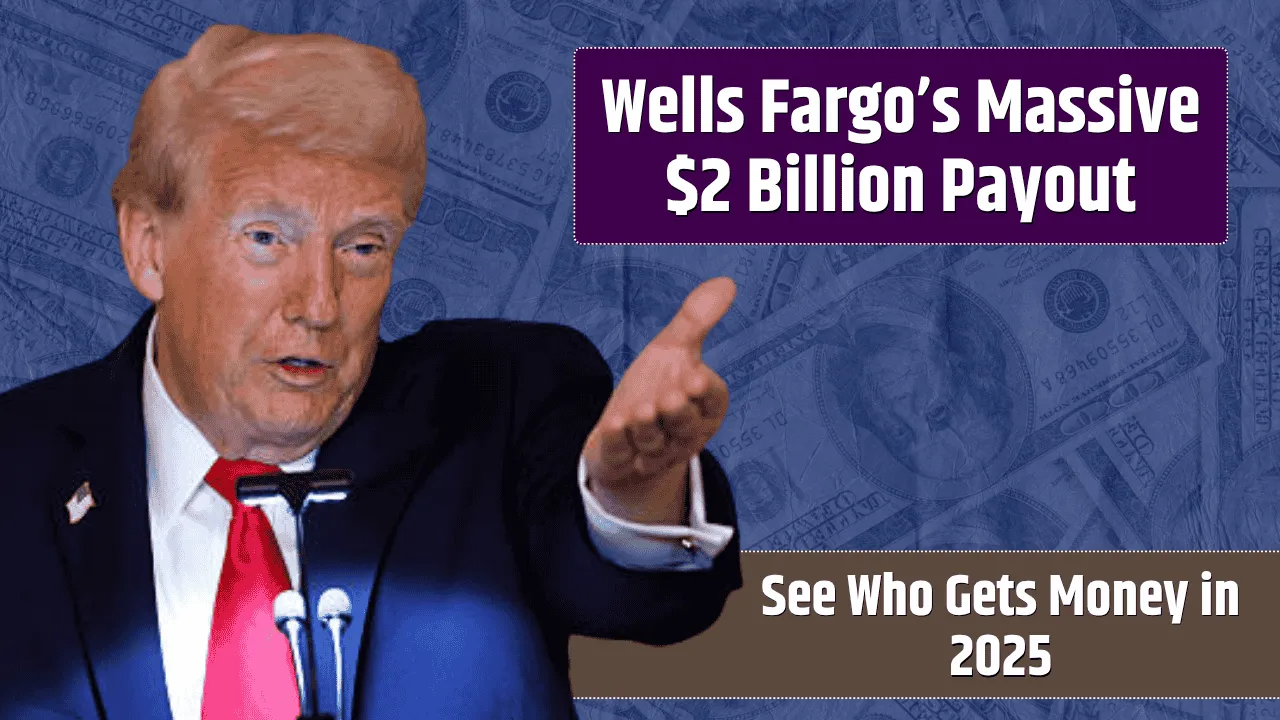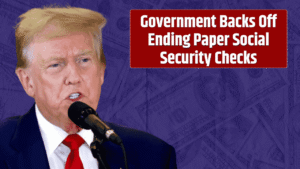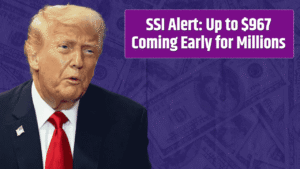Join on WhatsApp
Get the latest updates directly on WhatsApp – motivation, news & more!
Wells Fargo is once again under national scrutiny as the banking giant prepares to distribute one of the largest consumer settlements in U.S. history. The Consumer Financial Protection Bureau (CFPB) has finalized a $3.7 billion enforcement action, with $2 billion reserved exclusively for direct restitution to customers wronged by years of unlawful practices across multiple banking divisions. The remaining $1.7 billion will be paid to the U.S. Treasury as civil penalties.
The payout, set to continue through late 2025, aims to compensate millions of Americans affected by wrongful fees, mortgage errors, and auto loan abuses. Most payments will arrive automatically, requiring no claims or applications—making this a major moment in U.S. consumer restitution history.
What Sparked the Wells Fargo Settlement
According to the CFPB’s consent order, Wells Fargo engaged in a widespread pattern of consumer misconduct between 2011 and 2022. Investigators identified systemic failures across multiple departments, revealing that customers were routinely charged illegal overdraft fees, misapplied loan payments, and, in some cases, even lost their vehicles through wrongful repossessions prompted by faulty data.
The CFPB described the findings as “a decade of deeply entrenched malpractice,” warning that profit-driven incentives had repeatedly overridden compliance and ethical standards.
| Category | Type of Violation | Impact on Consumers |
|---|---|---|
| Checking & Savings Accounts | Unlawful overdraft and duplicate deposit fees | Lower balances, repeat fees |
| Auto Loans | Wrongful repossessions and unnecessary insurance | Loss of vehicles and higher loan costs |
| Mortgages | Incorrect payment postings and charge errors | Credit damage, foreclosures |
| Add-On Products | Failure to cancel or refund optional plans | Retained fees, lost coverage |
How the $3.7 Billion Settlement Is Structured
The total $3.7 billion penalty includes:
- $2 billion for direct consumer payments.
- $1.7 billion in civil fines paid to the U.S. Treasury.
The CFPB emphasized that the overwhelming majority of funds will go directly to affected consumers. This mirrors past enforcement patterns, but few settlements in the banking sector have reached this magnitude. It is one of the largest financial penalties ever issued against a single U.S. financial institution.
CFPB Director Rohit Chopra stated that this case sends a strong message about accountability and systemic reform, adding that “no major bank should benefit from practices that exploit customers through hidden or unlawful charges.”
Who Qualifies for the Wells Fargo Restitution
If you held a checking, savings, auto loan, or mortgage account with Wells Fargo between 2011 and 2022, you may qualify for compensation. The bank, under CFPB direction, identified eligible customers through internal reviews and account-level data audits.
You do not need to submit a claim or provide any financial details manually. Refunds are being processed automatically, with funds sent by direct deposit, mailed check, or account credit depending on the customer’s record.
| Eligible Customer Type | Example Violation | Possible Refund Range |
|---|---|---|
| Auto Loan Borrowers | Wrongfully repossessed car or inflated loan | $1,000 – $5,000+ |
| Mortgage Holders | Misapplied payments or incorrect late fees | $500 – $3,000 |
| Checking Account Users | Unauthorized overdraft or deposit fees | $25 – $300 |
| Add-On Service Buyers | Unrefunded protection or insurance plans | $50 – $500 |
Payment Schedule and What to Expect in 2025
As of mid-2025, Wells Fargo has already begun sending out refunds in staggered phases. The distribution is expected to continue into late 2025 as the bank reconciles outstanding accounts and verifies consumer records.
Customers are advised to monitor their Wells Fargo online accounts and email for official notifications.
Important note: No claim form is required. Any message or website requesting account details, processing fees, or personal verification in exchange for payment should be treated as a scam.
How to Confirm Your Eligibility Safely
The CFPB and Wells Fargo have issued multiple warnings about fraudulent settlement assistance offers circulating online. Scam operations have attempted to impersonate the bank or federal agencies by promising early access to settlement funds.
To verify legitimate information:
- Review updates directly at the CFPB enforcement portal on consumerfinance.gov.
- Contact Wells Fargo’s official customer service or settlement hotline at numbers listed on the bank’s website.
- Avoid responding to texts or emails from unknown sources claiming to process payments.
- Report suspected scams to the Federal Trade Commission (FTC) via reportfraud.ftc.gov.
If you believe you’re due a payment but have not received one by mid-2025, the CFPB recommends confirming that your contact and mailing address are updated and submitting an inquiry through the official complaint portal.
Broader Consumer Protections and Bank Oversight
Beyond individual refunds, this settlement signals a new era of accountability within U.S. banking oversight. As part of the agreement, Wells Fargo remains under extended supervision by the Office of the Comptroller of the Currency (OCC) and the Federal Reserve.
Mandatory reforms include:
- Transparent customer disclosure policies.
- Elimination of multiple-fee systems for overdraft or deposit errors.
- Automated remediation systems for future consumer complaints.
- Annual compliance reviews monitored by federal agencies.
These measures are intended to permanently overhaul the bank’s fee structure and customer service procedures while restoring trust following years of misconduct scandals.
By 2025, Wells Fargo reported completing most of the reforms ordered in the 2022 consent decree, though regulators maintain heightened oversight. The CFPB confirmed periodic audits will continue into 2026 to ensure consumer protection standards remain enforced.
What This Means for U.S. Consumers
The Wells Fargo settlement has broader implications beyond one bank. It underscores a proactive regulatory stance that prioritizes consumer restitution over corporate leniency. The CFPB’s success in securing a multibillion-dollar payout highlights a deeper federal commitment to investigating hidden fees, misapplied payments, and deceptive loan terms.
For the average consumer, this case is a cautionary tale about the importance of monitoring financial accounts and challenging suspicious charges. It also reinforces the growing influence of the CFPB as a consumer watchdog, setting a precedent for similar enforcement actions across the banking sector.
Looking Ahead: Accountability and Reform
While Wells Fargo continues efforts to rebuild its image and strengthen compliance systems, the scale of the 2025 restitution proves the cost of neglecting consumer fairness. For regulators, the case marks a signal victory in their campaign to hold major financial institutions accountable; for the public, it’s a reminder that compensation is possible when systemic abuse is exposed and prosecuted.
As millions of eligible customers begin receiving payments through 2025, this landmark settlement serves as more than restitution—it represents a fundamental shift in American banking oversight, reaffirming that consumer protection is not just a legal requirement but a financial necessity.




